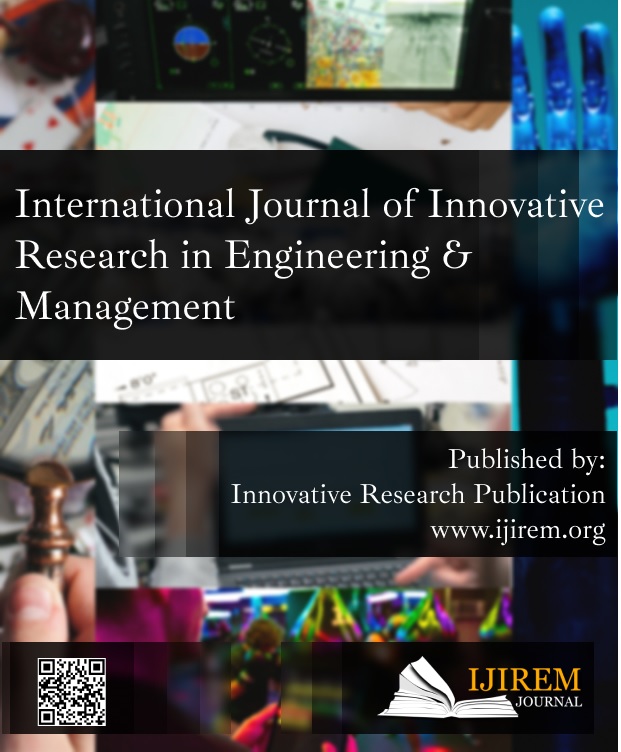Innovative Green-Technology SMEs as an Opportunity to Promote Financial De-Risking
Keywords:
De-Risking, Finance, Green Technology, SME.Abstract
The authors propose that the G20 concentrate on sustainable construction SMEs as a method to boost financial de-risking while satisfying the Paris Agreement's promises and the United Nations Sustainable Development Goals. And according to G20/OECD Higher Levels of motivation of SMEs Financing, SMEs, comprising small - angle x, are vital engines of entrepreneurship, investment, business growth, and empowerment in viable options as well as moderate emerging nations. This should be actually achieved by timely manner for international investment through: (1) an investigating structure that enables monitor the scale-up of green-technology SMEs; (2) the use of taxpayer resources to signal application of green SMEs to investment firms; and (3) the involvement of SMEs inside this prototype of carbon trading platforms. The G20 will ensure that modern, low-carbon SMEs becomes appealing, low-risk economic opportunities for the corporate companies by adopting these suggestions.
Downloads
References
A. Sbardella, F. Perruchas, L. Napolitano, N. Barbieri, and D. Consoli, “Green technology fitness,” Entropy, 2018.
A. Valero, A. Valero, G. Calvo, and A. Ortego, “Material bottlenecks in the future development of green technologies,” Renewable and Sustainable Energy Reviews. 2018.
M. Song, S. Wang, and J. Sun, “Environmental regulations, staff quality, green technology, R&D efficiency, and profit in manufacturing,” Technol. Forecast. Soc. Change, 2018.
G. Das Soni, “ADVANTAGES OF GREEN TECHNOLOGY,” Int. J. Res. - GRANTHAALAYAH, 2015.
E. Verdolini, C. Bak, J. Ruet, and A. Venkatachalam, “Innovative green-technology SMEs as an opportunity to promote financial de risking,” Economics, 2018.
M. Song and S. Wang, “Market competition, green technology progress and comparative advantages in China,” Manag. Decis., 2018.
B. Cao and S. Wang, “Opening up, international trade, and green technology progress,” J. Clean. Prod., 2017.
B. Du, Q. Liu, and G. Li, “Coordinating leader follower supply chain with sustainable green technology innovation on their fairness concerns,” Int. J. Environ. Res. Public Health, 2017.
M. A. Ramdhani, H. Aulawi, A. Ikhwana, and Y. Mauluddin, “Model of green technology adaptation in small and medium-sized tannery industry,” J. Eng. Appl. Sci., 2017.
S. Aithal, S. Aithal, and P. S. Aithal, “Opportunities & Challenges for Green
Technology in 21st Century Opportunities & Challenges for Green Technologies in 21 st Century,” MPRA Pap. No., 2016.
S. Yin, N. Zhang, and B. Li, “Improving the effectiveness of multi-agent cooperation for green manufacturing in China: A theoretical framework to measure the performance of green technology innovation,” Int. J. Environ. Res. Public Health, 2020.
S. Wicki and E. G. Hansen, “Green technology innovation: Anatomy of exploration processes from a learning perspective,” Bus. Strateg. Environ., 2019.
G. Orsatti, F. Quatraro, and M. Pezzoni, “The antecedents of green technologies: The role of team-level recombinant capabilities,” Res. Policy, 2020.
M. Hong, Z. Li, and B. Drakeford, “Do the green credit guidelines affect corporate green technology innovation? Empirical research from China,” Int. J. Environ. Res. Public Health, 2021.
S. Wang, Y. Cheng, X. Zhang, and C. Zhu, “The implications of vertical strategic interaction on green technology investment in a supply chain,” Sustain., 2020.
D. Xia, W. Chen, Q. Gao, R. Zhang, and Y. Zhang, “Research on enterprises’ intention to adopt green technology imposed by environmental regulations with perspective of state ownership,” Sustain., 2021.
Q. Guo, M. Zhou, N. Liu, and Y. Wang, “Spatial effects of environmental regulation and green credits on green technology innovation under low carbon economy background conditions,” Int. J. Environ. Res. Public Health, 2019.
J. Hu, Z. Wang, Q. Huang, and X. Zhang, “Environmental regulation intensity, foreign direct investment, and green technology Spillover-An empirical study,” Sustain., 2019.
S. R. Paramati, D. Mo, and R. Huang, “The role of financial deepening and green technology on carbon emissions: Evidence from major OECD economies,” Financ. Res. Lett., 2021.
Z. A. Shaikh, “Present and future prospective of green technologies,” Pakistan Journal of Scientific and Industrial Research Series B: Biological Sciences. 2019.
Z. Mu, Y. Zheng, and H. Sun, “Cooperative green technology innovation of an E-commerce sales channel in a two-stage supply chain,” Sustain., 2021.
T. Stucki and M. Woerter, “The private returns to knowledge: A comparison of ICT, biotechnologies, nanotechnologies, and green technologies,” Technol. Forecast. Soc. Change, 2019.
J. Zhang et al., “Understanding the impact of environmental regulations on green technology innovation efficiency in the construction industry,” Sustain. Cities Soc., 2021.
S. Zhu and A. Ye, “Does the impact of China’s Outward Foreign Direct Investment on reverse green technology process differ across countries?,” Sustain., 2018.
N. Izieadiana, R. Zakaria, S. M. Shamsuddin, and F. Ahmad, “Decision making of green technology retrofitting in higher learning institution,” Int. J. Adv. Sci. Technol., 2020.
